
views
X
Research source
Once the bleaching process is finished, the bleach itself needs to be completely washed out of your hair. But after the color has been stripped, there is no way to reverse the bleaching. Instead, you can dye over the bleached hair to reverse the appearance and keep your hair healthy to more quickly grow out your bleached tresses.
Removing the Bleaching Product
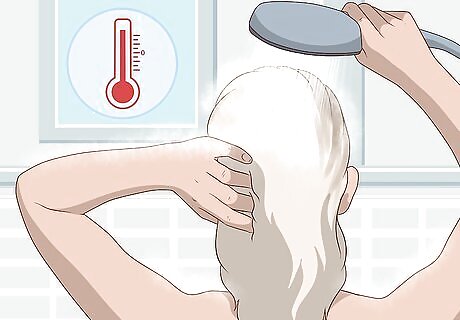
Rinse the bleach out of your hair using warm water. If you’re bleaching your hair at home, make sure to follow the product's directions accurately since leaving the bleach in too long can damage your hair or even burn your scalp. Once you’ve waited the directed amount of time (which may vary based on the exact product), get into the shower and use plenty of warm water to completely rinse the bleach from your hair. If you have particularly dark hair, you’ll probably need to bleach your hair more than once to achieve a super light look. To protect your hair and scalp, try to wait a few weeks between treatments.

Wash your hair with a mild shampoo. After you’ve rinsed the bleach out, gently wash your hair with shampoo and rinse thoroughly with warm water. This will help ensure you remove every last bit of bleach from your hair. To prevent further damaging your hair, use your fingers to gently massage the shampoo into your hair, rather than vigorously scrubbing. Find a gentle shampoo by checking the ingredients label and avoiding products with sodium lauryl sulfate, a harsh detergent chemical.
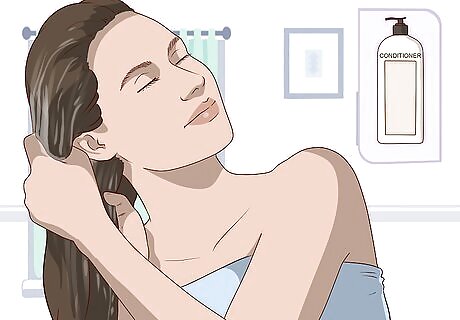
Condition your hair after removing the bleach. Using a deep conditioner helps further rinse out any remaining bleaching chemicals. More importantly, it starts to repair some of the damage done by the bleach. Apply the deep conditioner to wet hair immediately after shampooing and let sit for at least 20-30 minutes. Then rinse out with plenty of warm water. You can purchase a deep conditioning treatment at a drugstore or salon, or you can make your own at home. Try using ingredients found in your fridge or pantry like avocado, coconut oil, banana, or honey and olive oil. Mix the ingredients together in a bowl or blender and then apply to hair like regular conditioner.
Coloring over Bleached Hair

Evaluate your hair’s condition before dying bleached hair. If you want to reverse the look of your bleached hair, you can dye your hair back to its original color. This is commonly done in salons and is known as a “two-process color service.” However, it’s important to make sure your hair is not too damaged by the bleaching process. If your hair is very dry, feels overly brittle, or breaks easily, you should consult with a stylist before applying color. Deep conditioning your hair can help restore some moisture to your tresses and bring your mane back to a state that is healthy enough to handle dye.
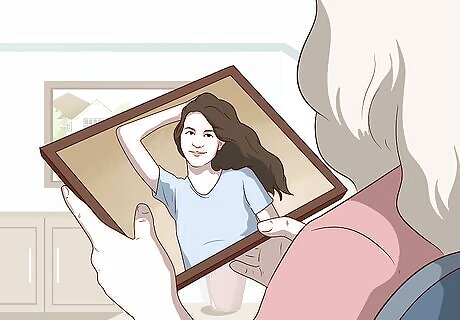
Use photos to find a dye that matches your natural hair color. If you’re hoping to return to your original hair color, start by looking at photos of your natural hair in different lights (including outdoors). Try looking at your grade-school photos to determine your underlying tones. This can help you select the right dye color in the salon or at the store. For example, if your hair was a warm, honey blonde as a child, pick warm toned dyes for a natural look. If you’re debating between a few shades, start with the lightest one. If you dye your hair too dark and want to go lighter, you’ll have to bleach it again, which can cause serious damage.

Dye your hair in stages if you’re trying to go much darker. Whether you color your hair at home or visit a salon, going from bleached hair to a darker look is a slow process. The safest way to reverse the bleached look is by applying a dye just a few shades darker, like a caramel blonde. After a few weeks, you can dye it a few shades darker. Repeat until you have the color you want. If you try to dye bleached hair too dark right away, it can leave your hair looking patchy and potentially green. It will also fade more quickly.
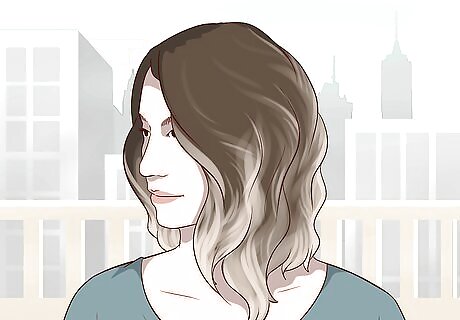
Try an ombré style to grow out bleached hair more gracefully. Ombré hair is darker at the roots and gradually fades into a lighter color at the ends. This style can help you grow out your bleached locks in a way that looks intentional. Once your roots have grown in slightly, ask your stylists to use highlights and lowlights to blend your natural color into the lightened ends. Ombré styles can also help extend the time between color touch-ups, since the non-bleached, natural roots are an intentional piece of the multi-tonal look.
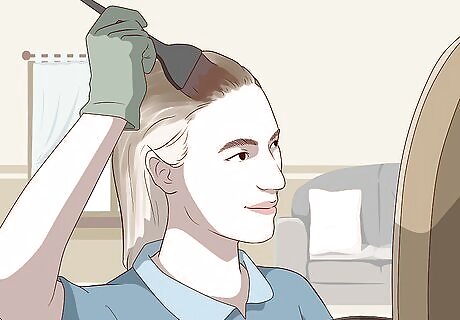
Color your hair at home if your budget is tight. If you want to reverse the bleached look but don’t want to pay for a professional salon service, consider coloring your hair at home using a store-bought dye. Be careful not to go too dark on the first round: dying your bleached hair more than three shades darker can result in patchy or discolored results. Follow the instructions on your at-home dye box carefully. Precondition with a deep conditioning treatment. Bleached hair is already damaged, so it’s important add extra moisture to your hair before dying it. Many at-home dye kits come with a preconditioning treatment included. Prevent stains by protecting your skin with a thin layer of vaseline along your hairline. Wear gloves to protect your hands and cover stainable surfaces with a towel. Test the dye on a small piece of hair (preferably from a less visible place, like the nape of your neck) to make sure you like the results. Some dyes, particularly darker ones, may not look the same on bleached hair.
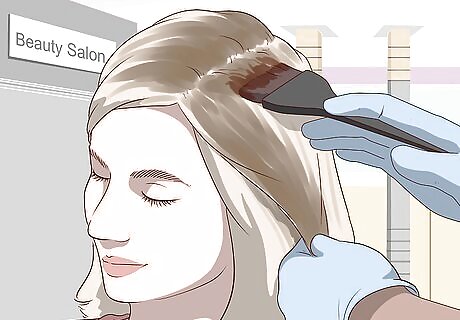
Visit a hairdresser or stylist for a more professional dye job. Most hairdressers are experienced working with bleached hair and can help you make a plan to cover up or grow out unwanted bleach. Be sure to share your entire hair history with your stylist, including details on how and when you bleached your hair. Keep in mind that covering your bleached hair may take a few salon visits. Although this may take more time and money, it can help minimize damage to your hair and ensure better results.
Growing out the Bleach

Eat a diet rich in omega-3 fatty acids, protein, and iron to promote hair growth. The right foods can help provide your body with the nutrients it needs to grow hair more quickly. Protein is a major building block for your hair, so make sure you’re getting the recommended daily amount of 0.8 g per 1 kilogram (2.2 lb) of body weight. Omega-3 fatty acids are also critical for healthy, fast-growing hair, but your body doesn’t produce them on its own. Try eating more fish like salmon, sardines, and mackerel to find these healthy fats. Greek yogurt, which contains plenty of protein as well as vitamin B5 (also known as pantothenic acid), is particularly helpful in stimulating hair growth and blood flow to your scalp. Leafy greens like spinach and kale contain iron, which can help promote hair growth. They also contain other vitamins and minerals (like beta carotene, folate, vitamin A and vitamin C) that help maintain a healthy scalp.

Take a keratin or B-vitamin supplement to strengthen your mane. Certain dietary supplements may also help grow out your bleached hair more quickly. Keratins are proteins that provide strength and resilience to the cells that form the hair, skin, and nails. Consider taking a keratin supplement to help your tresses resist damage and breakage. Similarly, B-vitamins can help promote hair growth and strength. Vitamin B-7, also known as Biotin, is particularly linked with promoting hair growth. You can find Biotin in pill form at your local drugstore, or in foods like salmon, sweet potatoes, and eggs. Aim for 30 micrograms of biotin every day.
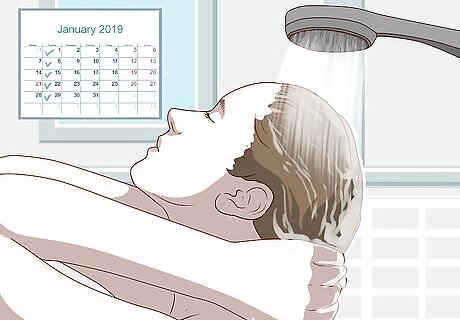
Wash your hair less frequently to reduce breakage. Your hair becomes quite fragile when you bleach it, so treat it gently to minimize breakage and help it grow out faster. Try washing your hair less frequently since many shampoos contain harsh chemicals that can further damage your mane. If you can, wash your hair only once a week. If you can’t wait that long between washes, try shampooing every other day instead. If you need to wash daily, reduce the damage shampoo can cause by mixing 1 part shampoo with 3 parts water before washing. You’ll still get a sudsy clean, but without as many harsh chemicals.

Apply a deep conditioner weekly to help repair the damage caused by bleaching. Many people notice dryness, brittleness, and breakage after bleaching their hair. While the bleach itself cannot be undone, you can combat these side effects by using a pre-shampoo deep conditioning treatment on a weekly basis. This may help your bleached hair grow out more easily and quickly. Apply your deep conditioner to dry or wet hair and let it sit in for at least 20-30 minutes. Rinse with warm water and wash your hair as you normally would. Bleaching raises your hair cuticle, causing your hair to tangle more easily. Conditioning treatments can help counteract this by flattening the cuticle, sealing in moisture, and reducing knots. You can purchase a deep conditioner at most drugstores and salons, or you can make your own at home using products like coconut oil or avocado. Also consider a hot oil treatment or protein mask to further repair your tresses.















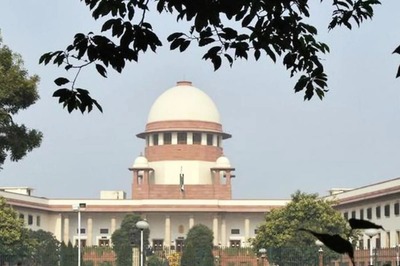

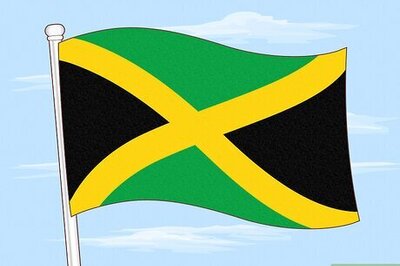

Comments
0 comment